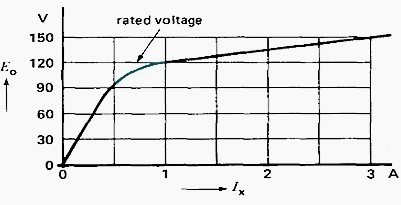The loss in efficiency of rewound motors
Approximately 300,000 motors are rewound in the UK every year, with an average rating of about 12 kW, so the efficiency of rewound motors is extremely important. The loss in efficiency on rewinding depends on the techniques, processes and skill used to perform the rewind, and is usually between 1 and 2%.

The reasons for increased loss are discussed below. If the choice is between rewinding a standard efficiency motor or purchasing a new high efficiency motor, the difference in efficiency will be 4 to 5% at full load in favour of the high efficiency motor, which will also have a much longer service life.
Generally speaking, there are three factors affecting the efficiency of rewound motors, and let’s talk about each of them //
1. Increase in Iron Losses
An increase in the iron losses can be caused by //
- Mechanical damage to the core
- Thermal damage to the core
- Electromagnetic changes
Mechanical stress in the core will increase the hysteresis loss, as might happen if the core is fitted into a new frame with an undersized bore. The practice of hammering stator teeth back into place after stripping will result in increased hysteresis locally as a result of the residual stress.
Eddy current loss will increase if the insulation between adjacent laminations is damaged, for example by burring together by filing or by accidental impact.


The stator tooth tips and rotor surface are the most vulnerable, since both carry high frequency harmonic fluxes. Skimming to remove damage is rarely acceptable because the air gap is increased and efficiency reduced.
Thermal damage to the oxide or varnish insulation between the laminations is normally regarded as the usual cause of increased iron loss following a rewind. New work in which the increased loss after rewind under carefully controlled conditions for a number of motors was measured has shown that for conventional steels the temperature should not exceed 380°C. Losses increase very rapidly at higher temperatures.
Most motors are designed to run with flux densities in the stator and rotor core just over the knee of the magnetisation curve. If the winding characteristics are changed after rewind, for example if the number of turns are reduced, the flux density and hence the loss will increase.


Go back to Rewound motor losses ↑
2. Copper Loss
Stator copper loss is the largest loss (at full load) in most induction motors. The winding pattern may be changed during rewinding to simplify the process, and in doing so the repairer must consider the effect on flux density and resistance.
These losses are reduced for example by increasing the size of the conductive bars and end rings to produce lower resistance. Stray load losses are the result of leakage fluxes induced by load currents. These can be decreased by improving slot geometry of rewound motors.
Full considerations of these losses are very complex, and are beyond the scope of this article. Full details can be found in this reference.
Go back to Rewound motor losses ↑
3. Mechanical Considerations
The concentricity of rotor and stator is very important. It is common practice to metal spray shafts or bearing housings which have been damaged in service. This is acceptable only if special care is taken to preserve concentricity – errors which result in a minimum to maximum gap ratio greater than 1:1.25 will adversely affect efficiency.
Replacement bearings (and lubricants) should be to the original specification, and repairers should be aware that high efficiency motors are beginning to use newer, more sophisticated bearings.
Go back to Rewound motor losses ↑
Rewinding a Large Motor (VIDEO)
References //
- Electrical Energy Efficiency by Copper Development Association
- Low voltage motors – Motor guide by ABB







This article is consistent with our experiences.
We recommend rewinding only if replacement is too expensive or not possible.
The outcomes depend very much on the skills and experience of the rewinder.
Yes. The EASA study performed in the UK, headed by Professor David Walters, showed that motors can be rewound without degradation, using strict procedures. Also one can increase efficiency,by changing design. Example: smaller coil overhangs. Changing from concentric to lap wound.
Hi,
Please study the report from EASA and the test performed by the university of Manchester were the rewinded motors very often had better performance than the new one.
ELR and REPA motor have performed the same test with same result!
BR
Claes Hugoson